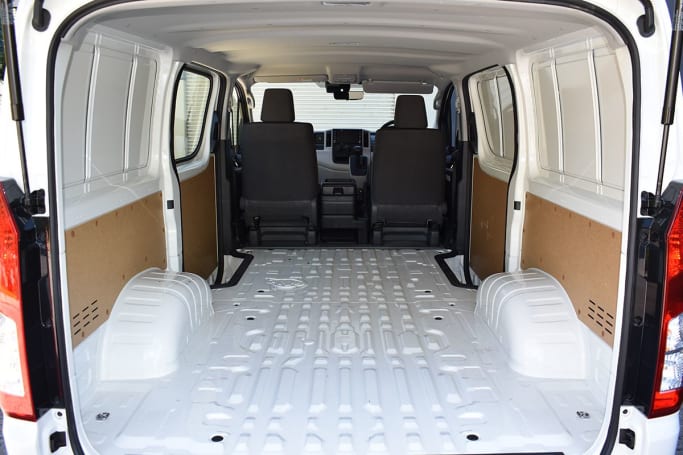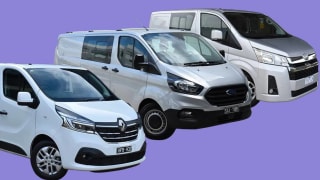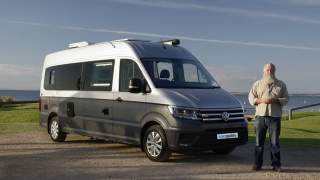Our test vehicle is the popular LWB (Long Wheel Base) workhorse which, following the quiet demise of the redundant 3.5 litre petrol V6 option, is powered exclusively by Toyota’s venerable 1GD-FTV 2.8-litre four-cylinder turbo-diesel.
It’s available with either standard six-speed manual or optional six-speed automatic like our example, which although presented in the HiAce’s ubiquitous French Vanilla has a more upmarket look thanks to Toyota’s GL option pack. This adds body-coloured front and rear bumpers, door handles and mirrors, plus front and rear chrome garnishes, front fog lamps and a digital rear-view mirror with auto-dimming. The $1000 GL pack boosts the list price to $47,650, but that’s still comfortably under $50K before on-road costs.
A consistent theme with HiAce is small enhancements made as running changes during production. These don’t attract much attention, as they represent a process of incremental refinement rather than major upgrades.

The first of these revisions in mid-2020 were focused on the infotainment system to improve connectivity and ease of use. More came in July 2021 (as fitted to our test vehicle) comprising a larger centre console plus Toyota Connected Services, which includes an app for mobile phones and safety/security functions like Stolen Vehicle Tracking, Automatic Collision Notification, SOS Emergency Call and more.
With its 16-inch steel wheels fitted with plastic wheel covers and 215/60R16 tyres, the HiAce comes with a full-size spare plus a work-focused standard equipment list. This includes folding and heated door mirrors with indicators, tilt-and-reach adjustable leather-accented steering wheel, manual air-con and two 12-volt accessory sockets to name a few.
The dual-speaker infotainment system has a big 8.0-inch touchscreen and steering wheel controls, DAB+2 digital radio and multiple connectivity including Apple CarPlay and Android Auto, Siri voice recognition, Bluetooth, sat-nav and more.


















